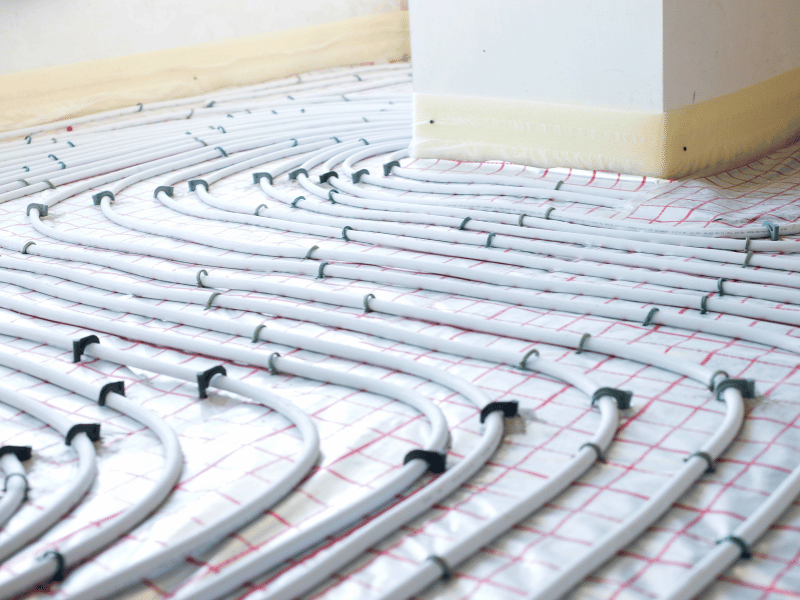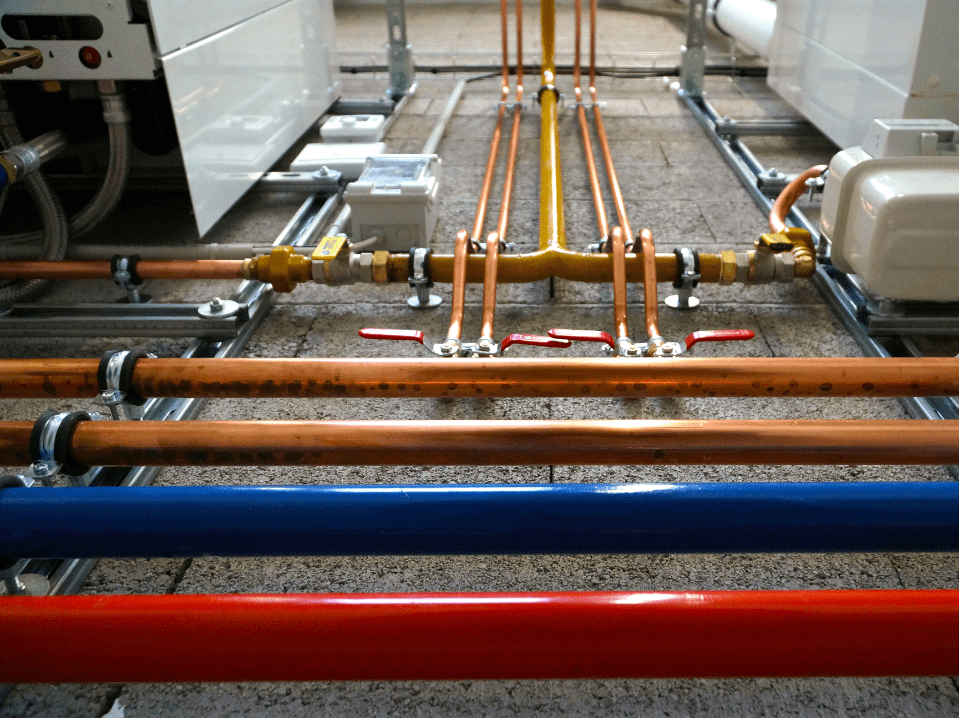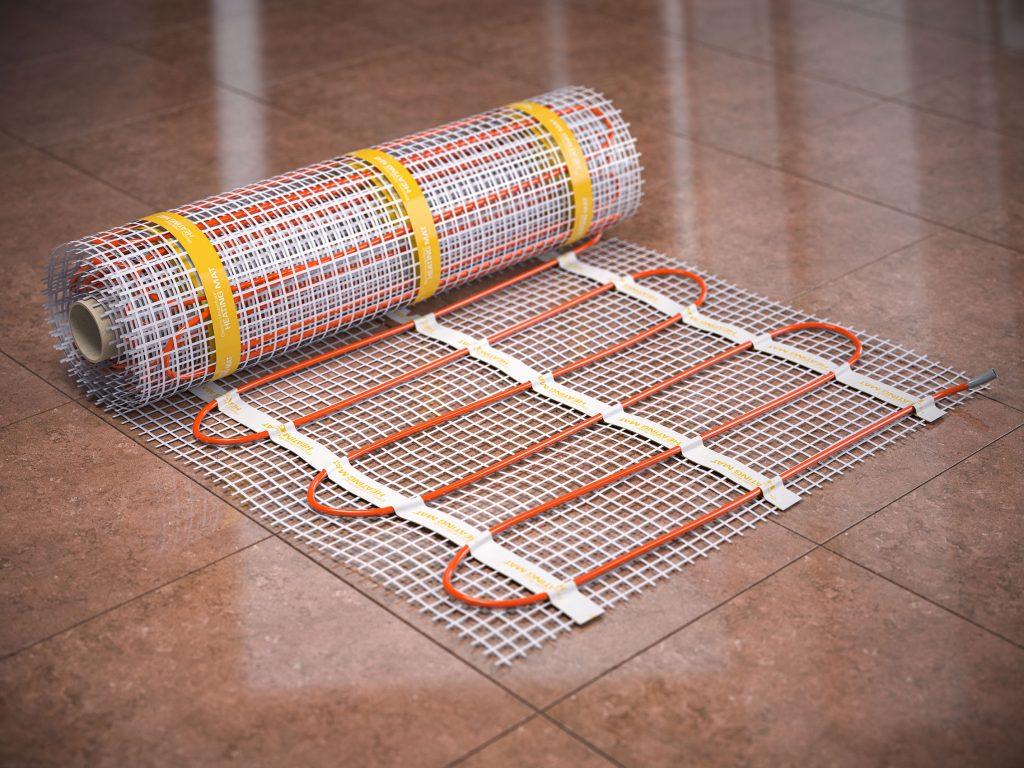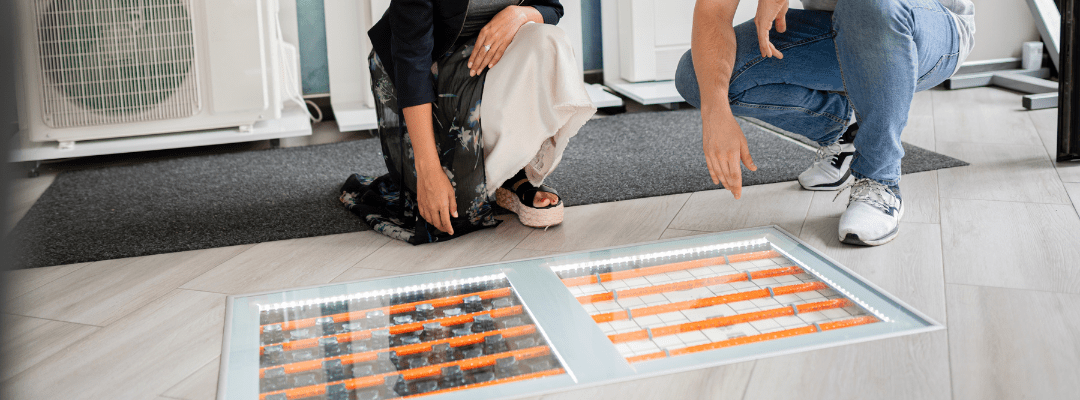Underfloor heating (UFH) is a popular choice for modern homes, offering comfort and efficiency. However, in the UK, UFH systems must comply with strict Building Regulations, particularly Part L, which focuses on the conservation of fuel and power. This blog post provides a clear breakdown of the key regulations and considerations to help you ensure compliance while maximising the benefits of underfloor heating.
System Controls: The Heart of Efficiency
One of the primary requirements under Part L is the inclusion of effective system controls. These controls are essential for optimising performance and reducing energy consumption. Here’s what you need to know:
- All UFH systems must include thermostats to adjust the operating temperature.
- Electric UFH systems require room thermostats with manual override capabilities.
- For floors with a screed thickness exceeding 65mm, the system must automatically lower room temperatures during non-occupancy or night-time hours.
These measures ensure that UFH systems operate efficiently and adapt to the needs of the household.

Minimising Heat Loss

PERT pipes are similar to PEX pipes but with slightly different properties. They are designed to withstand higher temperatures, making them a suitable option for underfloor heating systems. PERT pipes offer good flexibility and are easy to install, although they are generally considered to be slightly less durable than PEX pipes. However, they are still a reliable choice for underfloor heating, especially in residential applications.
PB (Polybutylene) Pipes
Proper insulation is key to the effective operation of underfloor heating systems. Part L mandates specific requirements to reduce heat loss:
- Insulating Ground Floors: Floors in contact with the ground or external environments should be insulated to limit heat losses to 10 W/m² or less.
- Thermal Resistance: For UFH systems installed over unheated spaces, insulation with a thermal resistance of at least 1.25 (m²·K)/W must be included between the structural floor and the heating layer.
These measures not only enhance energy efficiency but also help to keep running costs down.
Flow Temperatures for Energy Efficiency
Flow temperature refers to the heat carried by water through the UFH pipes. To ensure compliance:
- UFH systems must operate with a maximum flow temperature of 55°C, aligning with Part L requirements.
- Typically, UFH systems achieve optimal efficiency at flow temperatures between 35°C and 45°C, ensuring even heating and reduced energy consumption.

Zoning and Control: Comfort Meets Efficiency

One of the major advantages of underfloor heating is its ability to create distinct heating zones. The regulations require:
- Independent temperature control for each zone or room, allowing users to tailor heating to their preferences.
- This zoning capability not only improves comfort but also enhances energy efficiency by avoiding unnecessary heating.
Insulation Standards: Optimising Thermal Performance
The U-value, which measures heat loss, is another crucial consideration:
- Floors should achieve a U-value of no more than 0.25 W/m²K.
- For UFH systems, a lower U-value of 0.15 W/m²K is recommended to prevent heat loss and improve overall system performance.
This ensures that the heat generated by the system is effectively retained within the home.
Floor Coverings and Thermal Resistance
Floor coverings play a significant role in the efficiency of underfloor heating. It’s important to consider:
- The combined thermal resistance of the floor finish and heated layer should be calculated to avoid hindering system performance.
- Materials like tiles, engineered wood, or vinyl are often preferred for their low thermal resistance and excellent heat conductivity.
Compliance Documentation: A Vital Step
To demonstrate compliance with Part L, installers are required to provide detailed documentation, including:
- System design specifications.
- Control strategies implemented in the system.
- Commissioning records to verify that the system is operating as intended.
This paperwork ensures that your installation is fully compliant with UK building regulations.
Why Compliance Matters
Adhering to these building regulations not only ensures that your underfloor heating system is energy-efficient but also contributes to the UK’s broader goals of reducing carbon emissions and promoting sustainable construction practices. Non-compliance can result in additional costs, inefficiencies, or even penalties, so it’s crucial to get it right from the start.
Final Thoughts
By understanding and implementing these regulations, homeowners and builders can ensure their underfloor heating systems are safe, efficient, and legally compliant. For more detailed guidance, consult the UK government’s Approved Document L, which provides comprehensive information on energy efficiency requirements in buildings.
Ready to install underfloor heating?
Make sure your project aligns with the regulations to enjoy a warm, cosy, and energy-efficient home for years to come.
